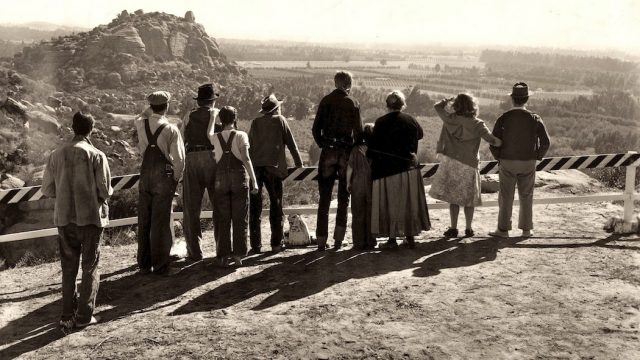From the perspective of 2020, it’s hard to believe how quickly John Steinbeck’s novel The Grapes of Wrath hit the screen. The novel was published in April 1939, and filming was completed in November of that year. Producer Darryl Zanuck, fearing anti-Communist backlash, even took the time to send private detectives to Oklahoma to confirm that conditions were indeed as bad as the novel asserted. (Steinbeck, of course, had done his own research, and things were indeed that bad.)
There are, of course, many more signals that The Grapes of Wrath is eighty years old. The $70,000 that was paid for the rights seems absurdly low, the language is not quite familiar, and director John Ford’s beautifully shot landscapes have been changed forever.
But not everything has changed. The Grapes of Wrath, movie and book, seem more prescient than not in 2020, when farms are struggling, the economy is plummeting, and environmental devastation is just around the corner. The same income inequalities that characterized the Gilded Age add extra pain to the effects of the global COVID-19 pandemic. Roger Ebert’s cheerful observation that “for many, The Grapes of Wrath had a happy, unwritten, fourth act” seems hollow when the unemployment rate has returned to Dust Bowl levels. (As I’ve said here before, and will again: nothing ever ends.)
On Friday, a major strike highlighted the people left behind in the “new economy” and suffering more in the age of COVID-19. The specter of the bank coming and taking everything is all too real for our debt-addled nation. Emily Hauser wrote recently that COVID-19 has been reminding her of the Dust Bowl, and it’s easy to see the echoes when we watch The Grapes of Wrath.
The Joads are also created to be familiar. They are the kind of honest, hardworking people political speechwriters love, but they’re also willing to hide their son from the cops when push come to shove (a son hotheaded enough to have taken a life before the film even begins). They are symbols, but director John Ford knows how to make symbols breathe. and his experience directing Westerns adds an extra, heartbreaking dimension to the story of a family whose grandparents established the farms lost to ruin.
The Grapes of Wrath is, of course, a very white story of the Dust Bowl and California farming (120,000 migrant farmers were repatriated to Mexico in the 1930s, and you won’t find their stories here). It sanitizes much of the violence and misery of its source material and gives the story a more hopeful, optimistic ending. But it doesn’t wholly shy away from the darkness, and it still retains much of the novel’s power and pathos. As Ma Joad says, the people keep going, and their voices still echo, eighty years later.
It’s too soon now to see how the story of COVID-19 and global climate change will end, to see if our people will survive, or how much more avoidable suffering we will have to experience. It would be nice to think that once again, the people will come through. But I think, for now, we are the Joads loading into that rickety car, hoping for the best. I fear that, like them, we don’t know what we’ll have to go through, or if we’ll make our way out at all.

